
The Gios Compact debuted in 1986, and has since been considered by cyclists and collectors to be one of the best frames Gios ever produced. The most revolutionary technical innovation introduced by the Gios Compact was its adjustable dropout system. The wheelbase can be lengthened or shortened by 8mm, to create an aggressive hill-climber or a more sedate roadie, depending on the terrain and the rider’s preference. This example from 1987 was recently restored in my shop with a period-correct mix of Shimano Dura Ace and 600 components. Read on to learn more about the Gios Compact and the Gios story.
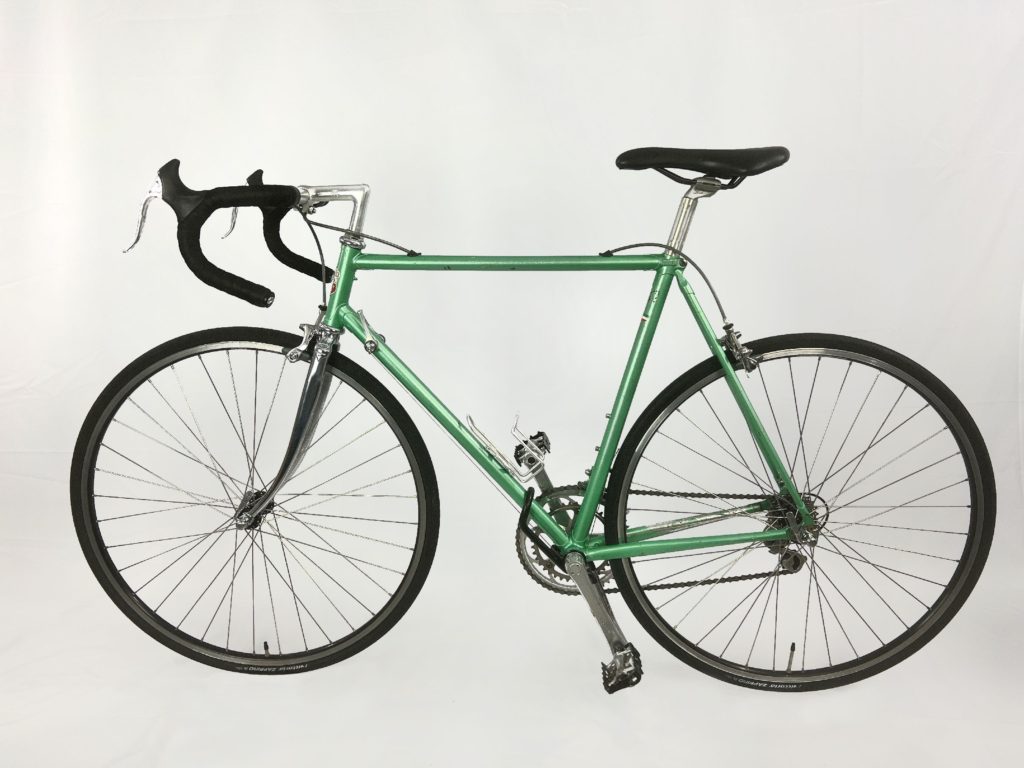
This Gios Compact is the 64th frame built in January 1987 (based on the serial number) and was made from Columbus SLX tubing. In addition to the sliding dropouts, it included other innovations such as patented waterproof seals for the internally-routed rear brake cable and a one piece bottom bracket shell with an integrated bridge. This example is an early model with beautiful seafoam green paint mixed with tiny metallic sparkles. Gios paint is famously sturdy, and on this bike it has outlived the decals, which are almost entirely gone.
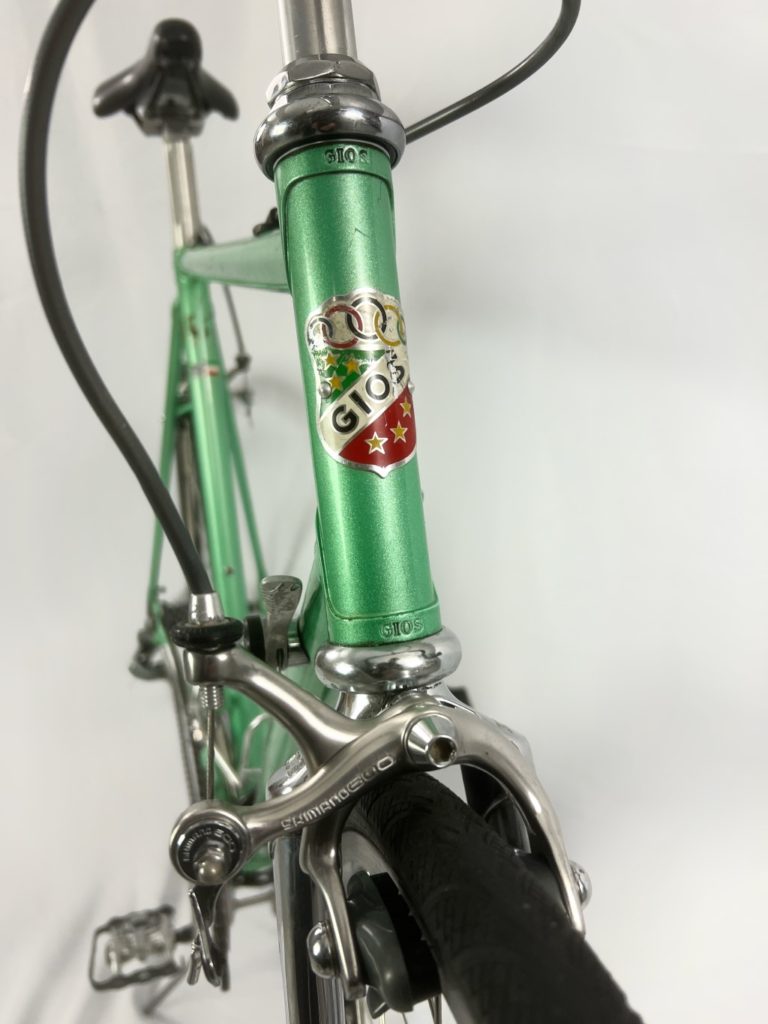 However, the Gios shield head badge is going strong, and the Gios name is cast proudly into the bottom bracket, seat cluster, fork crown, and head tube.
However, the Gios shield head badge is going strong, and the Gios name is cast proudly into the bottom bracket, seat cluster, fork crown, and head tube.
Custom-cast lugs are a reliable indicator of a premium steel bicycle frame, and the Gios Compact reflects this detail throughout. The one-piece seat cluster marries the visual impact of seat stay caps with the streamlined, aero look of a “fast back” style. In addition to the distinctive crown design, the fork itself is innovative, using special ovalized tubing for the fork blades.
Gios traditionally offered their bikes as frame sets only, leaving it up to the buyer or their local bike shop to build it up to their preference. By 1987, Shimano’s Dura Ace 7400 group had been on the market for three years and was proving to be a major competitor to Campagnolo’s top-tier components. In 1988, Andy Hampsten would win the Giro D’Italia on a bike equipped with Dura Ace 7400 and serious cyclists around the world took note. Despite its Italian origin, it’s no surprise that whoever originally owned this Gios Compact opted for a Shimano drive train.
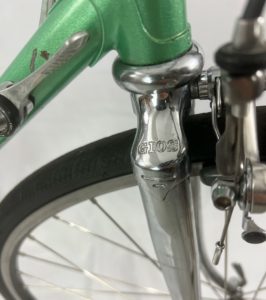
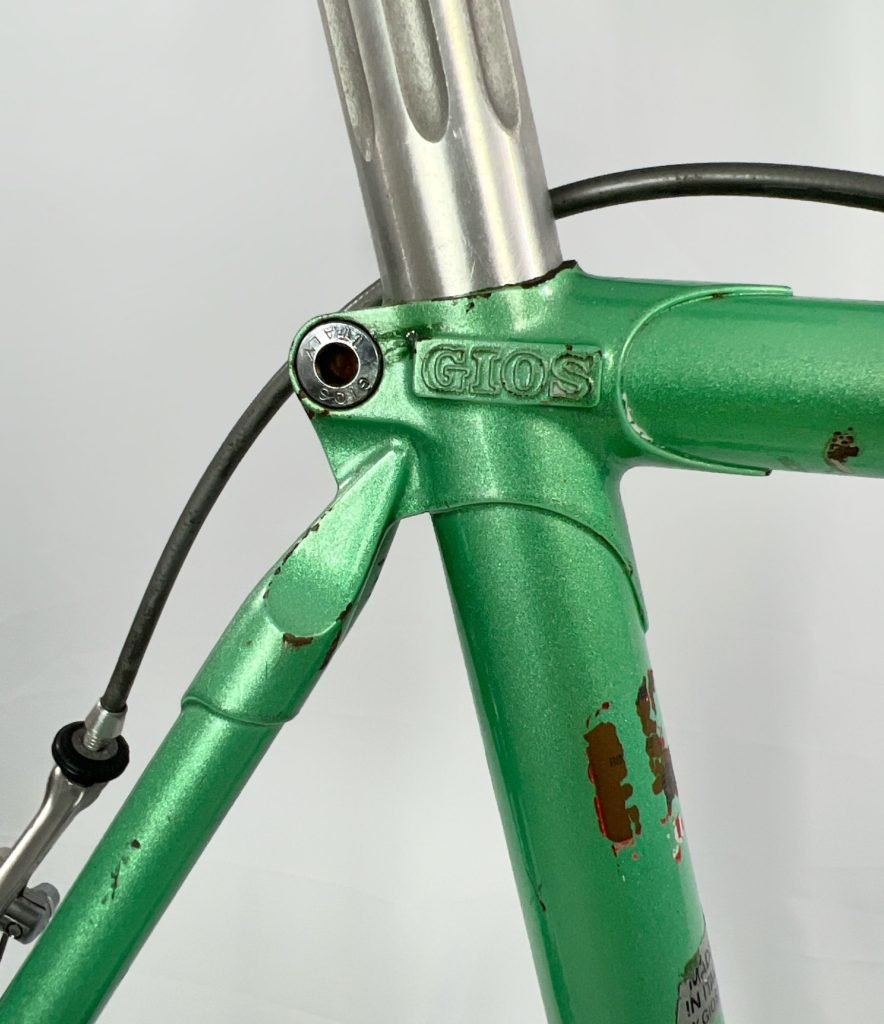
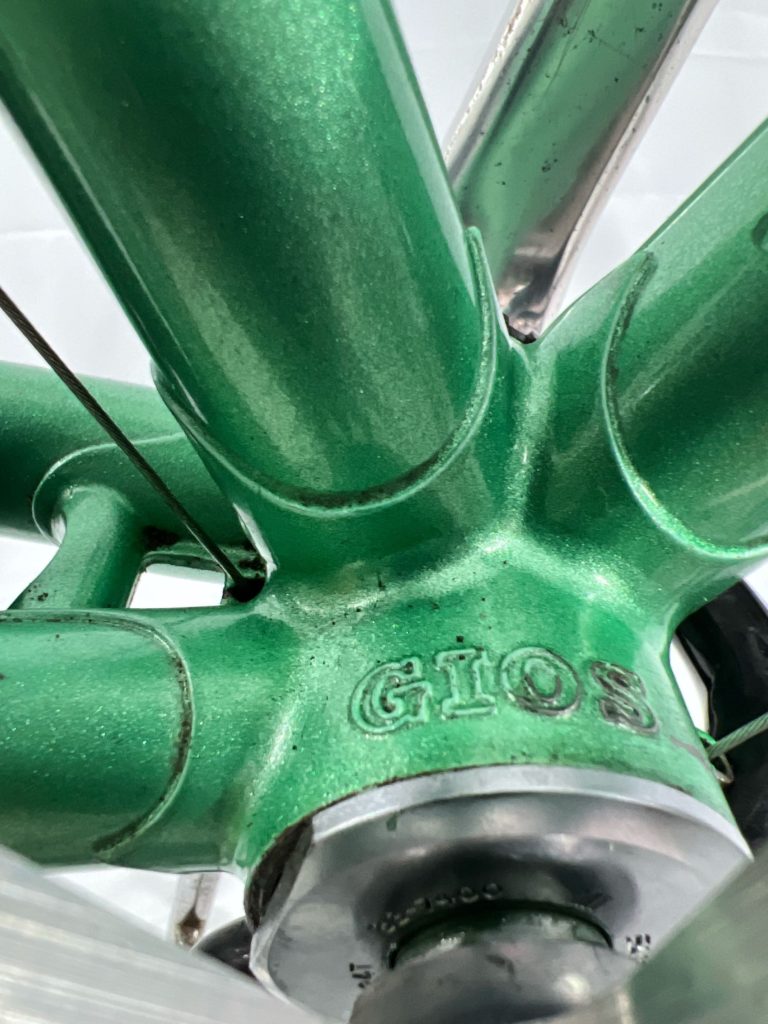
It’s medium-sized, with a 55cm seat tube (CTC) and 54 cm top tube (CTC), yielding a stand-over height of 32 inches. It’s equipped with a mix of Shimano Dura Ace 7400 and 600 components. The crankset, bottom bracket and one shifter are Dura Ace, with 600 accounting for the rest. It has a modern clincher wheelset and brand new 8-speed cassette. It’s spaced for 132mm O.L.D. wheelsets, and so can easily be fitted with a newer group set if desired. The SR cockpit of matching stem and Road Champion bars compliments the svelte look of the Compact.

Taking a closer look at the sliding dropouts, the longer setting was for stage races because, due to a longer wheelbase, it offered a bit more comfort. The shorter setting (as read from the 1995 Gio catalogue) was for climbing as it added more stiffness when riding out of saddle.
Gios patented the sliding dropout in 1984 and the advantage was multifold: besides the rear dropout movement, it was one of the first bikes to offer vertical dropouts which were also replaceable; a common feature of modern bicycles but unheard of at the time.
The steeper angles of top tube and head tube (74 degrees) provide a more forward “mash the hell out of cranks” position which works great on a flat and rolling terrain. This forward position does not work against a rider on tough climbs because one naturally slides back on the saddle to adjust to the hill slope.
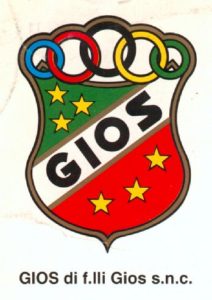 With strong parallels to origin story of Benotto, the Gios marque was also founded by a former professional cyclist, in the city of Turin, Italy. Tolmino Gios won the Coppa del Re in 1936, rode with the Italian national team at the Berlin Olympics in 1936, and won multiple stages of the Giro D’Italia in 1937 and 1938. When he opened his shop in Turin, however, he chose to focus on building practical city bikes instead of racers.
With strong parallels to origin story of Benotto, the Gios marque was also founded by a former professional cyclist, in the city of Turin, Italy. Tolmino Gios won the Coppa del Re in 1936, rode with the Italian national team at the Berlin Olympics in 1936, and won multiple stages of the Giro D’Italia in 1937 and 1938. When he opened his shop in Turin, however, he chose to focus on building practical city bikes instead of racers.
His son Alfredo joined the family business in 1958 at age 18. It was Alfredo who partnered with Giorgio Perfetti, whose Brooklyn-brand chewing gum sponsored a cycling team under the same name. Gios provided the bikes for the team, and in search of a colorway to match the “stars & stripes” design of the Brooklyn team jersey, he came up with the now-famous “Gios Blue”. The documentary film A Sunday in Hell features the team during the 1976 Paris–Roubaix, and the success of the team brought fame and fortune to the Gios marque.
In 1978, Gios became the supplier to the “IJSBOERKE GIOS” team, led by the great Didi Thurau. In the 1990s they supplied Team Kelme, a relationship that continued into the 2000s and yielded many victories. Today, Gios continues to be a major sponsor and supplier to the professional peloton, including Team “RELAX” and the legendary Colombian team “MANZANA POSTOBON”.
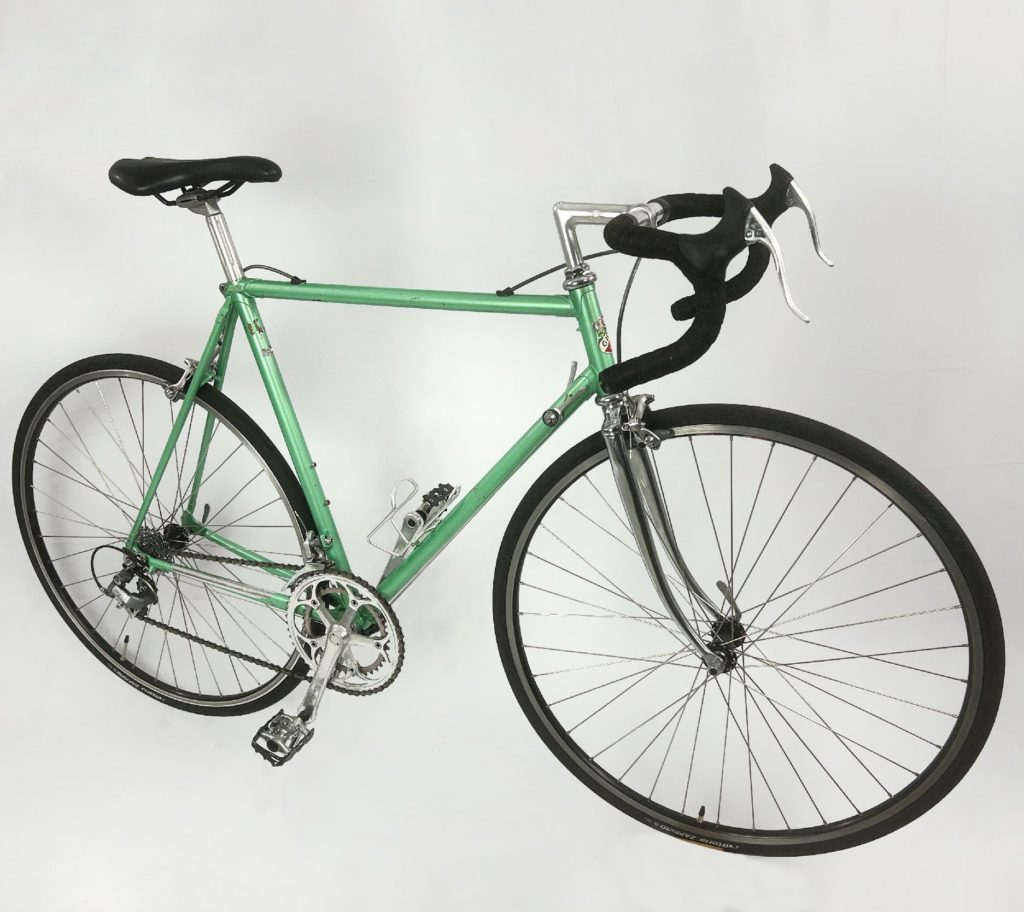
The Gios Compact represents the finest in Italian steel bicycle design, marrying traditional materials to a groundbreaking design, opening up new possibilities in handling and performance. Gios owners love the tight geometry and wheelbase for superior climbing & sprinting performance, and appreciate the resilient yet fine quality of the paint and chrome. Check out the gallery below, with many more close-up photos!























Hi,
Thanks for these very interesting infos on this beautiful bike!
If you allow me, may I ask you a question?
Planning to maybe buy one, I was wondering if 28mm tyres would fit on this bike (put on 17mm wheel rims).
Many thanks!
Etienne.
The consensus from my online search is that the maximum tire you can fit on a Gios Compact frame is 700×25. I don’t recall the size I had on the bike in my article.